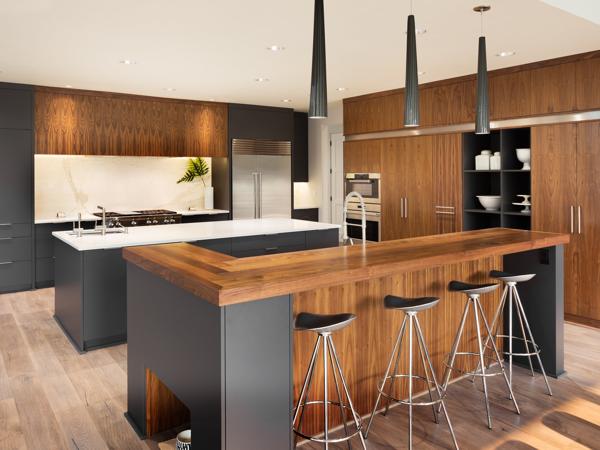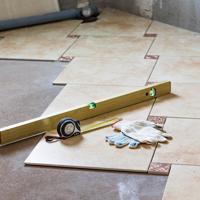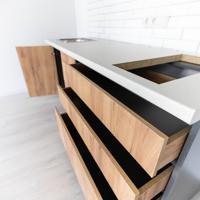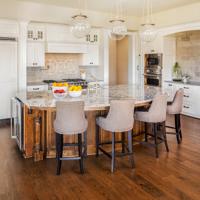When it comes to kitchen remodeling, one aspect that often stands out is flooring. Choosing the right kitchen flooring can enhance your kitchen's aesthetics and functionality. Here’s a detailed look at various kitchen flooring options, their pros and cons, and how to choose what might work for you.
Factors to Consider When Choosing Kitchen Flooring
Selecting kitchen flooring involves considering several factors:
- Durability: Kitchens are high-traffic areas, so durability is crucial.
- Water Resistance: Spills are inevitable, so water-resistant options are beneficial.
- Ease of Cleaning: Flooring that is easy to maintain can save time and effort.
- Style and Design: The floor should complement the overall kitchen décor.
- Budget: Costs can vary greatly, so consider your budgetary constraints. This is especially important when planning a Bathroom Renovation.
Popular Kitchen Flooring Options
1. Ceramic and Porcelain Tile
Ceramic and porcelain tiles are popular choices for kitchen flooring due to their durability and water resistance. They come in a variety of colors, sizes, and patterns, allowing for customization. Porcelain tiles tend to be more durable and water-resistant than standard ceramic tiles.
Pros:
- Highly durable
- Resistant to stains and water
- Available in a wide variety of designs
Cons:
- Cold and hard underfoot
- Can be slippery when wet
- Challenging to install if not experienced with Tools and Equipment
2. Vinyl Flooring
Vinyl flooring is valued for its versatility and affordability. It can mimic the appearance of other materials, such as wood or stone, while providing a comfortable underfoot experience.
Pros:
- Water-resistant and easy to clean
- Comfortable to walk on
- Budget-friendly
Cons:
- Can be susceptible to scratches and dents
- Colors may fade over time
3. Hardwood Flooring
Hardwood floors provide a classic and warm look in the kitchen. While they require some care to maintain, many homeowners appreciate their timeless appeal.
Pros:
- Attractive and timeless look
- Can be sanded and refinished
- Adds value to a home
Cons:
- Susceptible to water damage
- Requires regular home maintenance
- Can be expensive
4. Laminate Flooring
Laminate flooring is popular for those who enjoy the look of wood but need a more affordable and durable solution. It’s usually easier to install compared to hardwood.
Pros:
- Resists scratches and wear
- Easy installation
- Budget-friendly
Cons:
- Not as water-resistant as other flooring types, such as tile flooring.
- Can’t be refinished
5. Natural Stone Flooring
Stone floors are known for their luxurious appearance and durability. Each stone is unique, providing a distinct look to any kitchen.
Pros:
- Highly durable
- Unmatched natural beauty
- Increases home value
Cons:
- Expensive
- Requires sealing to prevent stains
- May feel cold and hard underfoot
6. Cork Flooring
Cork is an environmentally friendly option that offers a soft, warm feel underfoot. It’s becoming increasingly popular in modern kitchen designs.
Pros:
- Eco-friendly and sustainable
- Soft and comfortable
- Insulating properties
Cons:
- Needs sealing to prevent water damage
- Prone to dents and scratches
- Limited availability of designs
Personal Reflection
Choosing kitchen flooring can be a personal journey, and it might help to prioritize what matters most to you in your space. For instance, if you have young kids or pets, durable and scratch-resistant options like vinyl or laminate might be ideal. Similarly, if sustainability is important, cork could be worth considering.
References
- The Spruce - Types of Flooring
- Bob Vila - Kitchen Flooring Options
- HGTV - Pros and Cons of Kitchen Floors
Conclusion
Ultimately, each kitchen flooring option has unique qualities and considerations. Reflecting on your needs and preferences can guide you in finding a floor that fits your kitchen’s character and your lifestyle.
Choosing the right kitchen flooring might seem daunting, but with a little research and consideration, you can find the option that best suits your home renovation needs.




